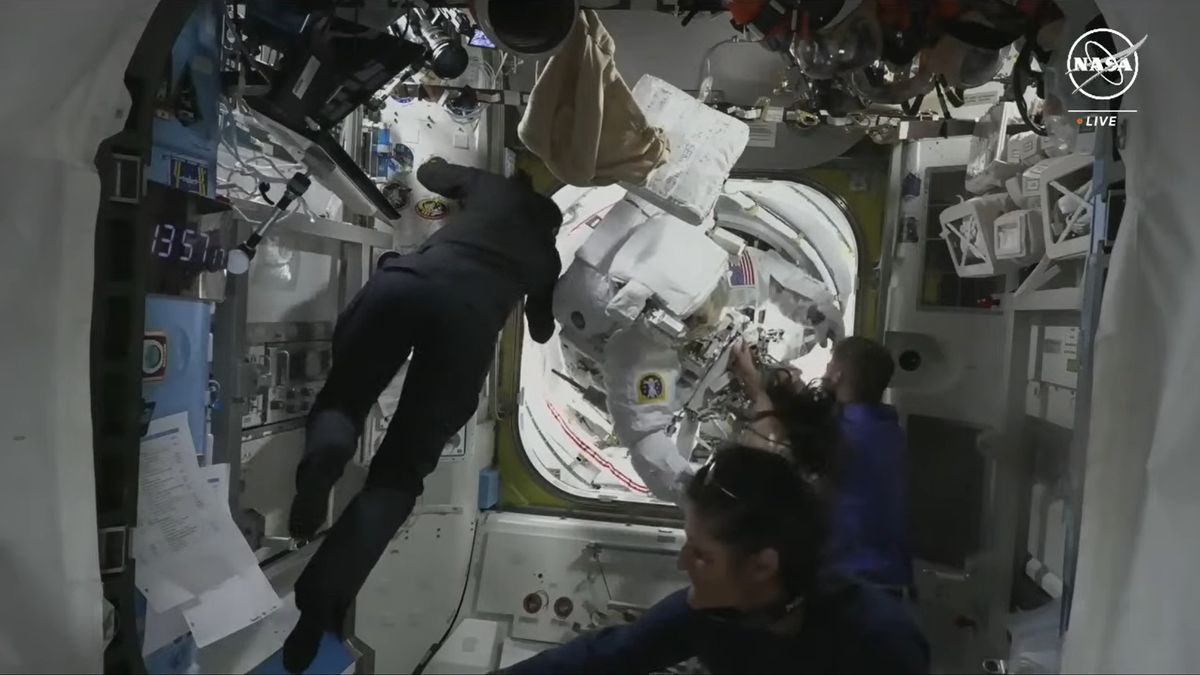Astronauts Tracy Caldwell Dyson and Mike Barratt were scheduled to perform a spacewalk on the ISS on Monday. However, unexpectedly, one of the spacesuits began to literally flood with water from the cooling system. Therefore, the operation had to be canceled.

Malfunctioning spacesuit on the air
NASA canceled a spacewalk on the International Space Station today (June 24) due to a coolant leak in a spacesuit hatch.
NASA astronauts Tracy Caldwell Dyson and Mike Barratt received a message from Mission Control at 8:52 a.m. EDT (1252 GMT) to abort their planned 6.5-hour trip outside the International Space Station (ISS). Six minutes earlier, the two of them had already switched to internal power for their spacesuits, meaning that the spacewalk had technically begun. The astronauts then opened the hatch to the ISS and officially completed the spacewalk at 9:51 a.m. EDT (1351 GMT).
During a live broadcast on NASA TV, they reported that there was literally water everywhere as they converted their spacesuits to internal power to prepare for extravehicular activities. It reported that the leak appeared to be coming from the servicing and cooling umbilical (SCU) on the Dyson spacesuit. Although the situation was serious, the astronauts were not endangered by the leak.
NASA released a brief official statement after the flight was canceled, adding that more information would appear on the agency’s ISS blog. The decision to cancel was made because it was unclear how much water remained in Dyson’s spacesuit after the leak, as a precautionary measure, officials added on NASA Television.
When the leak occurred, the astronauts were still in the hatch with the outer door open, but closed it moments after completing the spacewalk.
Spacewalk postponed for second time
This is the second postponed spacewalk. On June 13, an attempt by another group of astronauts (Matt Dominick and Tracy Dyson) was postponed due to discomfort in Matt Dominick’s spacesuit. The July 2 spacewalk is also scheduled to take place, but it is unclear whether it will take place under these circumstances.
The total duration of the spacewalk was 31 minutes, if we exclude the time elapsed between switching spacesuits to internal power and depressurization of the crew airlock. Thus, Tracy Dyson’s total time of extravehicular activity was 23 hours and 20 minutes for four spacewalks and Mike Barratt’s was 5 hours and 37 minutes for three spacewalks.
The spacewalk was a little behind the expected start at 8 a.m. ET (12:00 p.m. GMT) due to minor tether problems and other issues, but it was within the normal range until the duo reported ice (water) crystals coming out of the spacesuit.
Dyson later added that she would stay on the spacesuit’s battery because she was worried that a water leak could affect the hose connections to the ISS. The Mission Control Center told her that there would likely be no problems, but informed her that she could stay on battery power if she wanted.
What was expected during the spacewalk
During the spacewalk, Dyson was to pick up malfunctioning communications equipment, known as the radio frequency group, as well as obtain samples from the outer surface of the ISS to gather evidence of microorganisms in extreme microgravity conditions.
Monday’s spacewalk was to be the first of two future spacewalks to continue scientific research and maintenance of the orbiting laboratory (NASA originally planned three, but after the June 13 attempt, it plans to carry out only two).
Coolant leaks have repeatedly thwarted planned spacewalks in recent years. In March 2022, water was found in an astronaut’s helmet after such a mission, leading to a seven-month pause in near-Earth spacewalks.
According to www.space.com


